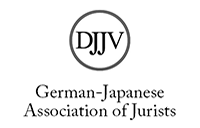Japanese Corporate Law: Important Cases in 2010
Abstract
In this paper, Professors Takahashi and Sakamoto introduce four important corporate law cases and use them to illustrate recent developments in Japanese corporate law. In particular, the cases illustrate how Japanese superior courts have interpreted provisions introduced to the Company Code in 2005 designed to make corporate restructuring more easily available.
In the first case, the Supreme Court is faced with a corporate restructuring issue from the point of view of employee-employer relations, where certain employees are unwilling to have their employment contracts transferred to a new company which has been split off from their existing employer. The case addresses the scope of obligations to consult with employees and gain their cooperation, as well as the significance of breaching various obligations on the part of the employer.
The second case involves a derivative suit by a shareholder unhappy with the price their company offered to purchase minority shareholdings from a partially owned subsidiary. The company wished to wholly own the subsidiary in order to reorganize its corporate group. That the minority shareholders were franchisees intimately involved with the corporate groups business further complicated the situation. The shareholders alleged the directors breached their duty of care in setting the purchase price; the directors rely on the business judgment rule. This case represents a move by the Supreme Court in the direction of giving directors greater scope to make decisions under the business judgment rule.
The final two cases were both decided by the Tokyo High Court. In the first case a shareholder had his shareholdings forcibly acquired by the company following a series of successful shareholder resolutions. The company was absorbed into other companies through a series of mergers. As the legislation does not specifically deal with the stand ing to sue, and legal interest of, a former shareholder, the court sets out its own criteria and methodology for determining when and how former shareholders may take legal action to void the resolutions that allowed to deprived them of shareholder status.
In the final case the High Court balances the interests of a company seeking to split part of its business into a subsidiary, and a shareholder who opposes the motion and exercises its rights to have its shares redeemed. The company and the shareholder cannot reach an agreement on the “fair value” of the shares and request the court do so. The Tokyo High Court establishes standards for determining fair value and clarifies the reference time at which fair value should be calculated.






